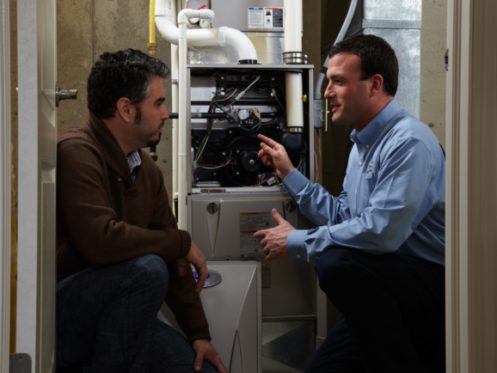Signs That Your Furnace Needs Repair
Recognizing the signs that your furnace requires repair is crucial for maintaining a comfortable living space, especially in colder months. Common indicators include unusual noises, such as banging or rattling, which may suggest loose components or mechanical failures inside the unit. Additionally, if you notice a sudden increase in your energy bills without a corresponding increase in heating needs, it may be a sign that your furnace is working harder than it should to achieve the desired temperature.
Another significant warning sign is the presence of inconsistent temperatures throughout your home. If certain rooms feel significantly colder than others, your furnace might be struggling to distribute heat evenly. Furthermore, if the pilot light is yellow instead of blue, it signals potential issues with gas combustion and requires immediate attention from a professional, like those at Hitchcock Heating and Air.
Common Furnace Types and Their Advantages
Furnaces come in various types, each with distinct advantages that cater to different heating needs. The most common types include gas, electric, and oil furnaces. Gas furnaces are popular for their rapid heating capabilities and energy efficiency, while electric furnaces are often easier to install and maintain, making them more accessible for many homeowners.
Oil furnaces, on the other hand, provide robust heating and operate well in very cold climates, although they may require more space for oil tanks. It's essential to consider factors such as energy costs, availability of fuel sources, and personal heating preferences when selecting the best furnace for your home. Understanding the advantages of each type can help homeowners make informed decisions regarding installations and potential repairs.
How to Maintain Your Furnace for Longevity
Regular maintenance is vital to keep your furnace running efficiently and prolong its lifespan. Scheduled inspections by professionals like Hitchcock Heating and Air can identify potential issues before they escalate into costly repairs. Additionally, changing the air filter every one to three months ensures optimal airflow and prevents dust and debris from accumulating within the system, contributing to lower energy costs and improved air quality.
Another essential maintenance task is to ensure that your exhaust flue is clear of obstructions. Blockages in the ventilation can lead to unsafe levels of carbon monoxide and other harmful gasses. Homeowners should also consider investing in a programmable thermostat, which can help regulate temperature settings and further reduce energy consumption, leading to a more sustainable approach to heating your home.

